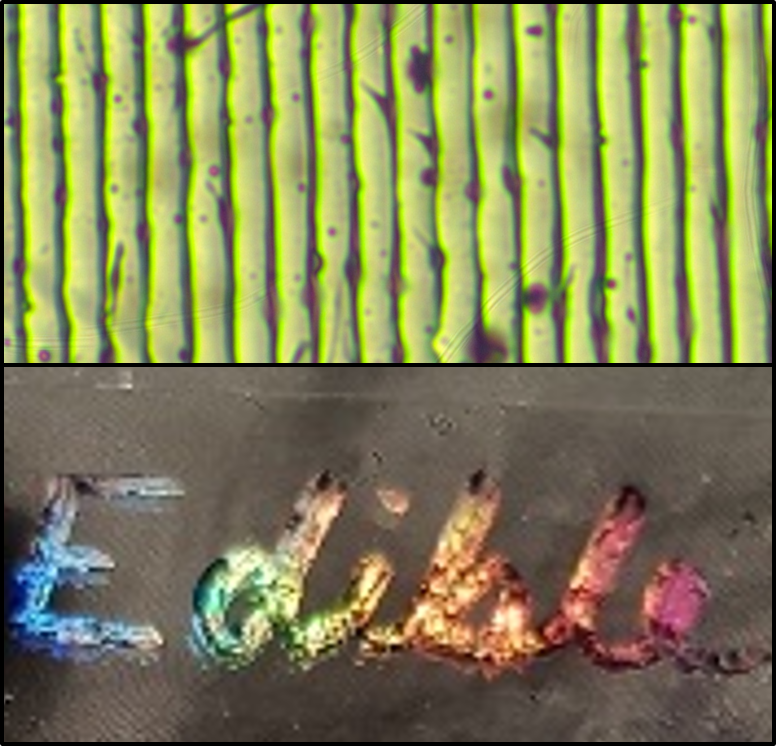
Holograms on food could be used to reduce packaging needs or share information about the food item.
A team of researchers, including Khalifa University’s Dr. Haider Butt, have developed a way to print edible holograms onto food using lasers and corn syrup. Their work was published in American Chemical Society Nano and funded by Khalifa University, Sandooq Al Watan, Aldar Properties and the Engineering and Physical Sciences Research Council.
Shiny and beautiful, holographic chocolate is a common sight among chocolatiers wanting to make an impact. But beyond aesthetics, holograms on food—specifically, edible holograms—could be used to reduce packaging needs, for example, as information about nutritional content or labels could be printed directly onto the food item.
Most holograms are imprinted onto metal surfaces with lasers to give the metal that shiny rainbow effect, but the volume of metal required for food would render the food inedible. Holographic chocolate works by molding edible holograms onto the surface of the chocolate, imprinting patterns that cause light to diffract into the classic rainbow pattern. However, this process only works for certain types of chocolate, with the researchers wanting to find a safe, fast, and versatile way to print edible holograms on all kinds of foods.
The researchers developed a method involving a thin film of dried corn syrup, vanilla, and water, which they then coated with a layer of black dye. Most of this black dye was etched off using lasers, leaving behind raised lines of the black dye on the film. When struck by light, these lines diffracted the light into the rainbow pattern, with different colors appearing at different angles. The team found they could control the intensity and range of colors by varying the pattern etched into the dye or by changing the sugar content of the corn syrup film.
The research team will now adapt the method to a food-grade dye that could replace the black dye used in these experiments so that holographic food can become a staple on the shelves.
Jade Sterling
Science Writer
17 February 2021






